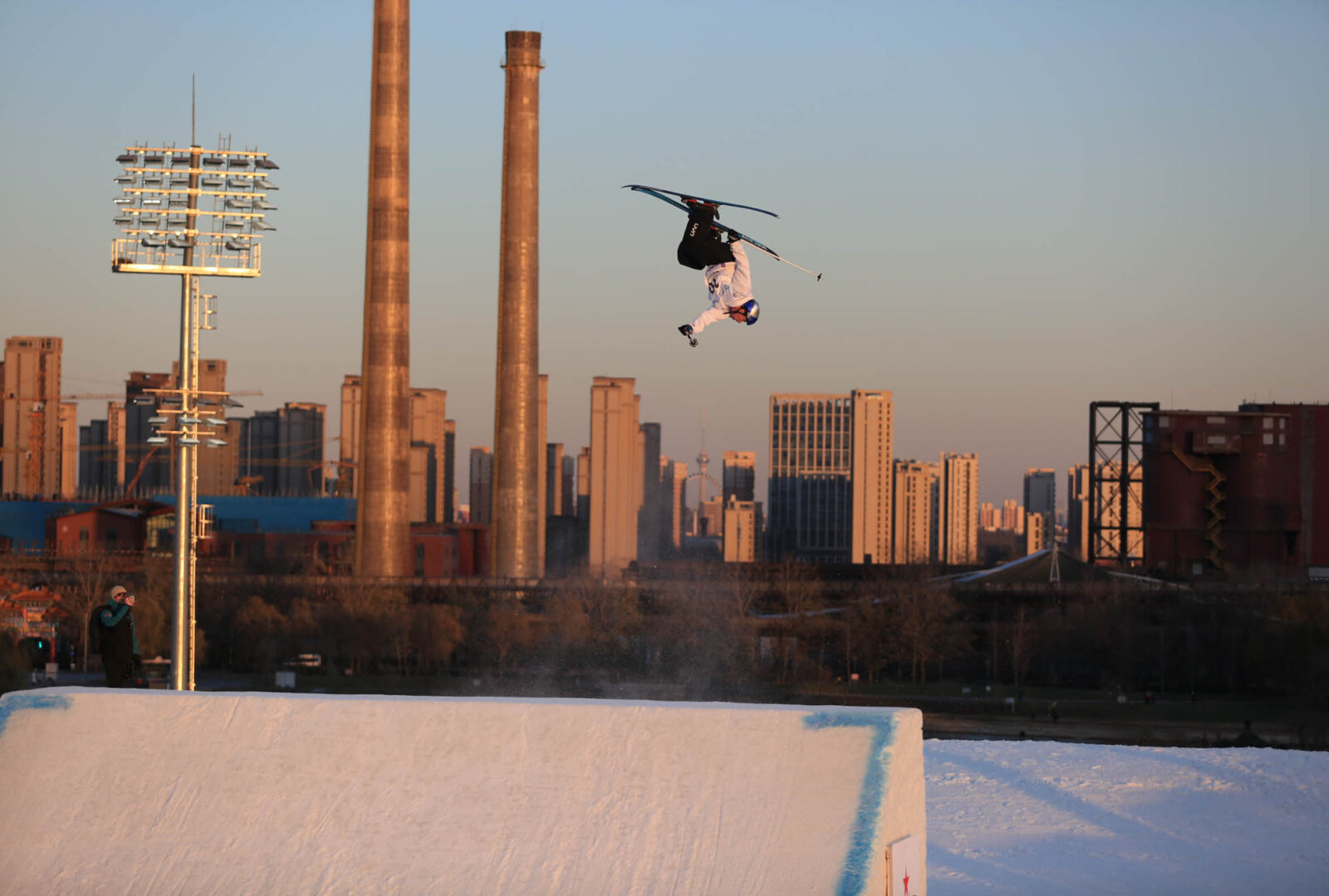
Event News
HighlightThe Beijing drift
Big Air Beijing: A turning point in contest judging?
This weekend, freeskiing returned to Beijing's permanent big air ramp for the first time since the 2022 Olympics. With one of the world's best venues, a stacked field and good weather conditions, this contest had all the makings of a legendary throwdown. While the women's contest turned out to be a bit anti-climactic, the men's final offered a full-frontal view of the exciting, unorthodox and contentious future of Big Air.
Women’s Finals: Gremaud remains unbeaten
Mathilde Gremaud won her third straight World Cup gold, following victories in Chur and Stubai. On her first jump, Gremaud put down a nearly perfect left carve double cork 1260 tail that earned the highest score of the contest, a 90.25. It took her two attempts to dial in her second trick, a switch left double 1080 safety, with a score of 85.25 that set her comfortably atop the podium.
"That feels crazy, three in a row first thing, and with the week I had it was super challenging for me," said Gremaud, hinting at something personal that she left unsaid for now. "Being able to ski like today, conditions were also amazing, it feels unreal."
"A lot of emotions for me this week," she added. "It feels great to be able to ski and feeling like I'm in the right place."

FIS Freeski World Cup Big Air Beijing 2023 | First Place: Mathilde Gremaud (YouTube)
Second place went to Scotswoman Kirsty Muir, who stomped a clean rightside double cork 1080 safety and a leftside double cork 1440 cindy. (In case you’re wondering, that’s a safety grab behind the heelpiece of the binding. And yes, it’s a pejorative.) On her third run, Muir made a grab at the gold with an attempted double cork 1440 tail, but overrotated and crashed.
A leftside double cork 1260 safety and a switch left bio 900 mute carried Flora Tabanelli to third place, the best result yet for the up-and-coming Italian rider in just her third World Cup start.
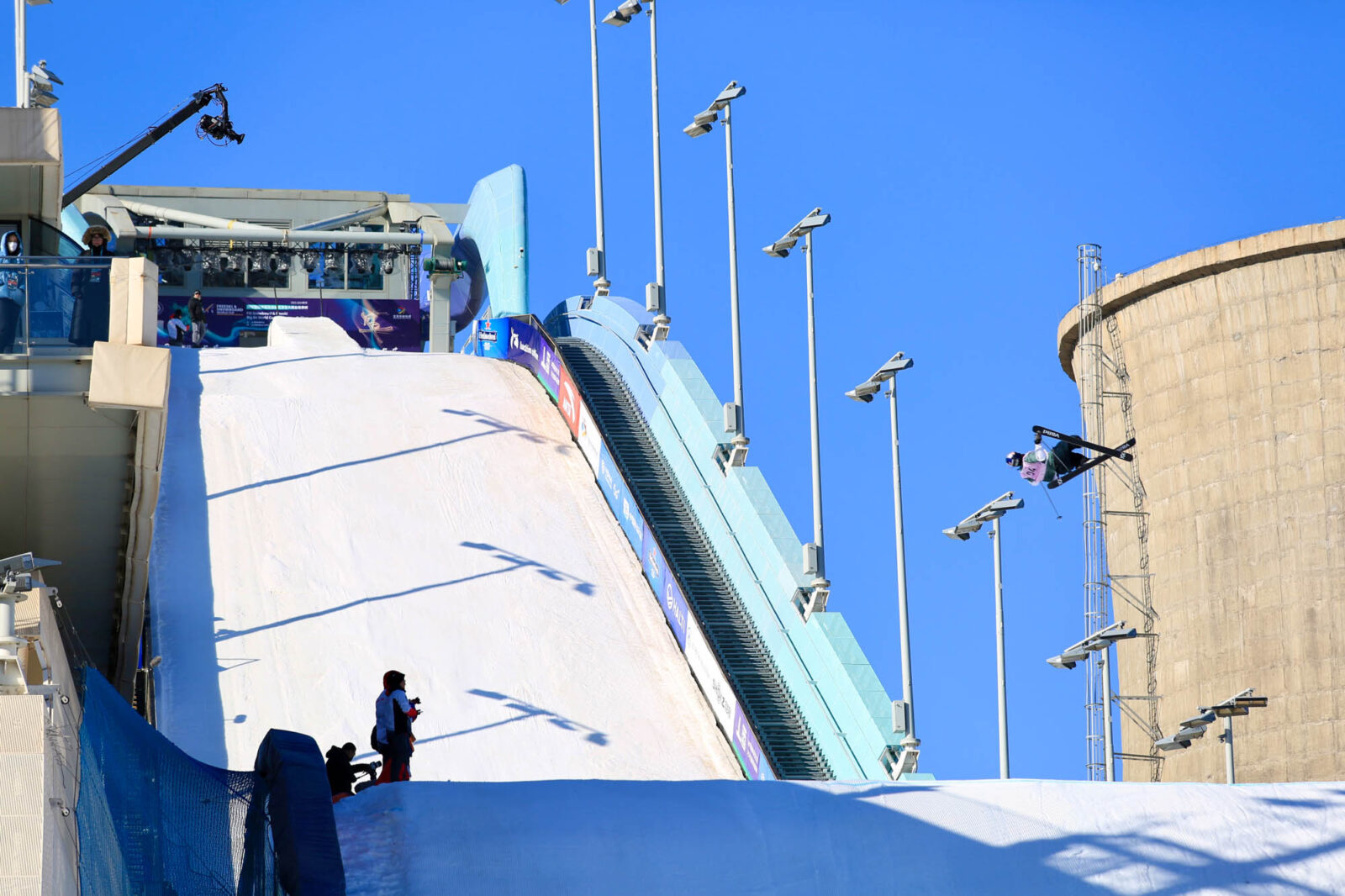
Kirsty Muir´s star continues to rise with a second-place finish in Beijing. Photo: Buchholz/FIS
Switzerland’s Giulia Tanno skied to a respectable fourth place with the help of a left double cork 1080 safety and a right cork 900 double tail, while Anni Karava took fifth with a dub 10 of her own and a switch left 1080 tail, her best result yet in 31 World Cup starts.
The day’s big surprise was Tess Ledeux’s last-place finish. Tess’ all-or-nothing approach saw her crash twice while trying her left double cork 1620 safety. A lesser woman might have taken a step back and opted for the double cork 1260 mute that she can land in her sleep, but this is Tess Ledeux we’re talking about. After two crashes that took her out of podium contention, Ledeux finally relented and tossed her double cork 12, just to remind us what she’s capable of.
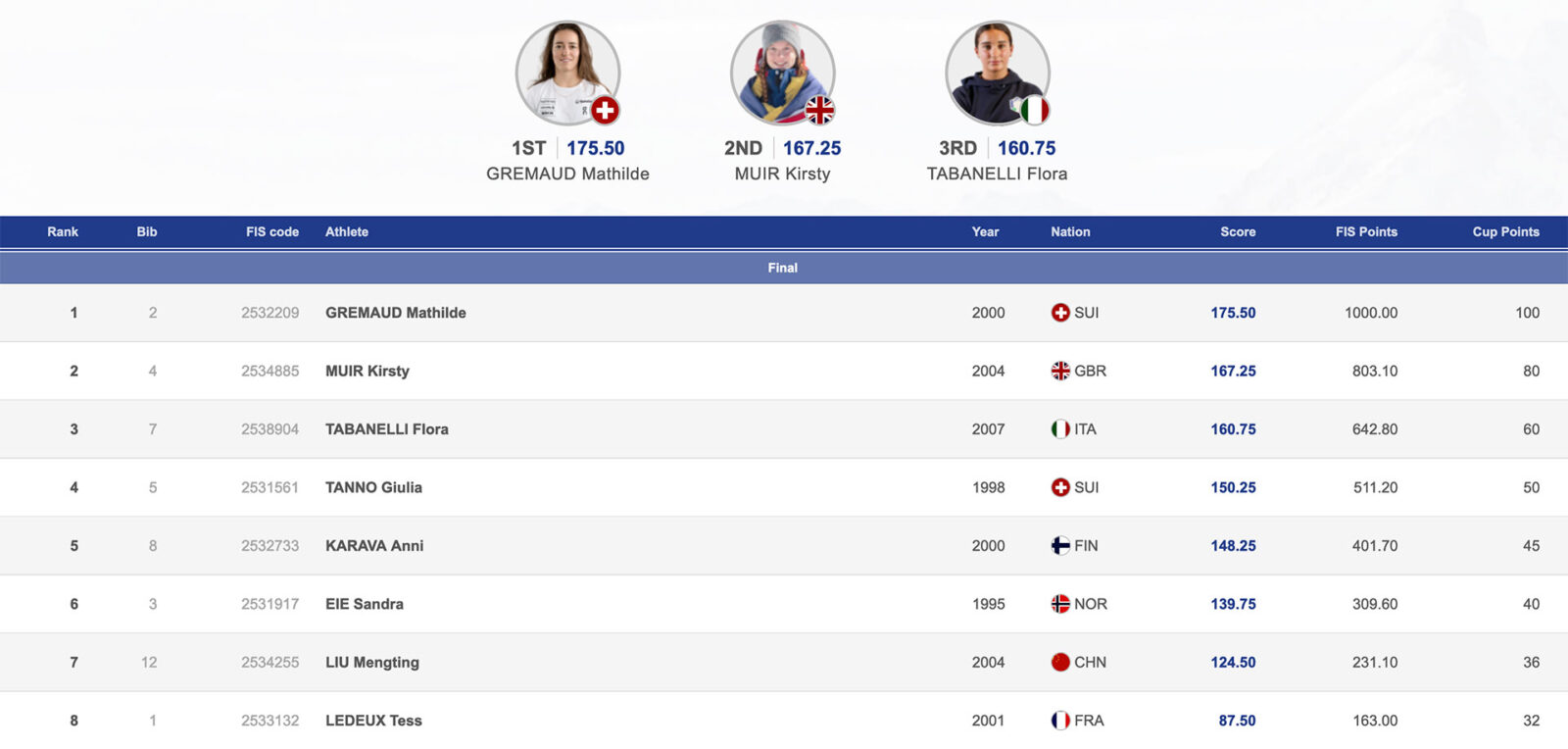
Men’s Finals: Battle of the Bringbacks
With optimal weather conditions, one of the world’s best Big Air jumps in play and one of the world’s best athlete fields to play on it, the men’s finals perfectly illustrated the culture clash currently playing out at the top levels of competition. The central question is this: What deserves a higher score, big spins or rotation-stopping bringback tricks?
In Beijing there seemed to be something of a sea change in the judges’ approach to this sticky question. Generally speaking, bringbacks and other creative approaches were rewarded with high scores, while big spins needed to have something special to break out of the froth.
This approach helped pave the way for Alex Hall’s first World Cup Big Air win since 2019. A-Hall employed the rightside double cork 900 bringback that helped him win the Olympic slopestyle contest here two years ago, and backed it up with a switch left tail butter 1440 opp japan. With two scores in the 90s after two jumps, A-Hall was able to take a casual victory lap on his third run.
“The jump was the best it’s been all week, which was sick,” said Hall. “It’s like T-shirt weather out here, so it got slushy, and it was really fun. I wasn’t necessarily going to come to this event, but then I figured I’d come and just enjoy myself—come to China, enjoy the country, and do the tricks I wanted to do without any pressure. It ended up working out, which I’m really stoked about.”
“I’m just stoked to put down the runs I wanted to, put them down clean and do them with the style I wanted to,” he added. “As long as I’m making myself happy, that’s why I’m doing it.”

FIS World Cup Freeski Big Air Beijing 2023 | Men´s First Place: Alex Hall (YouTube)
Second place went to Edouard Therriault, a stylish rider who nevertheless represented the “spin to win” approach today. Edjoy banged out a massive left triple cork 1980 safety, followed by a switch left double bio 1800 mute, to propel himself onto the podium in his last two jumps.
Andri Ragettli picked up third place with a left double 1800 cuban and a switch left double bio 1800 buick—seemingly picking up on the grab that has helped propel Alex Hall onto the big-air podium in recent years.
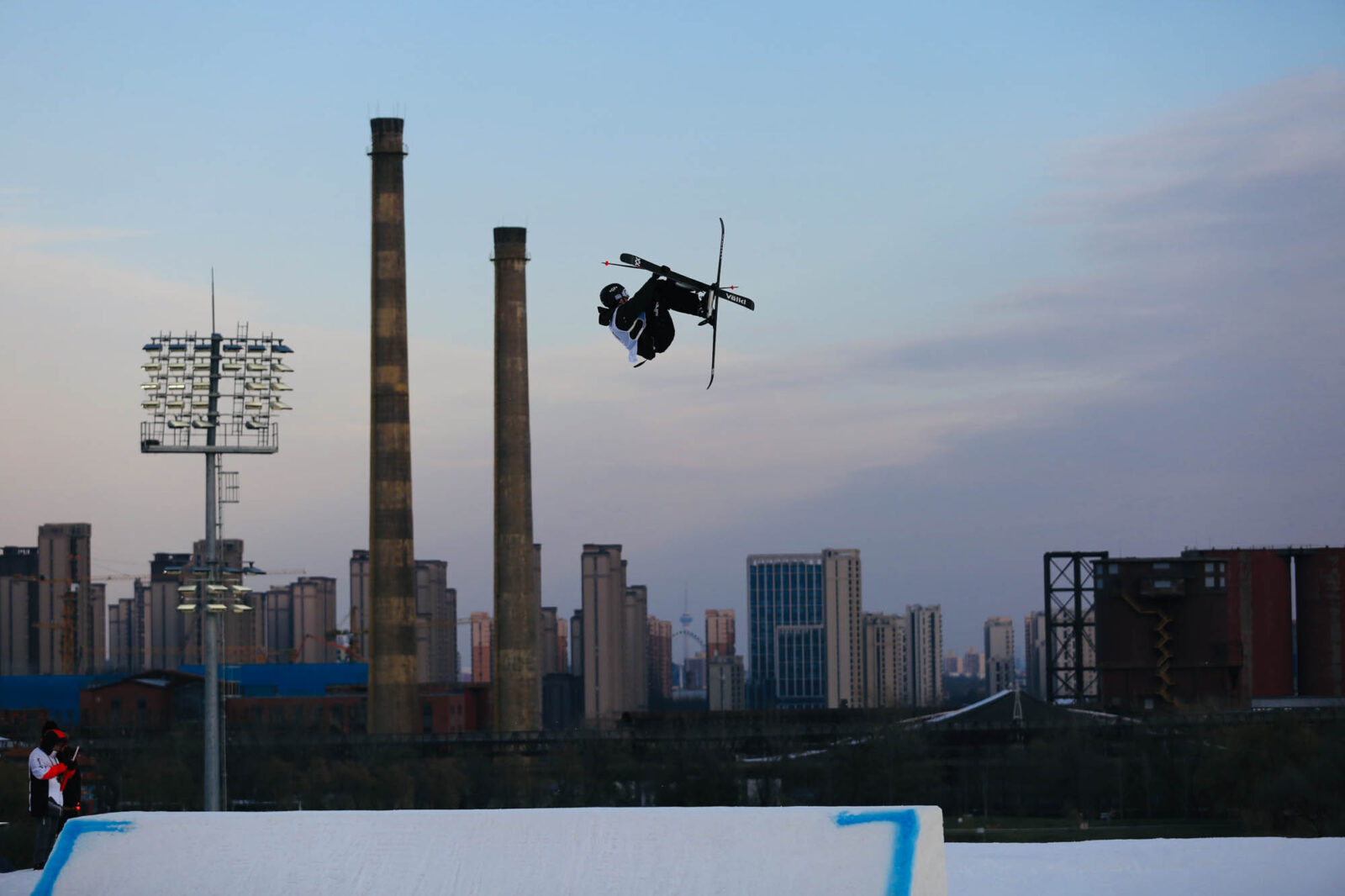
Perennial competitor Andri Ragettli fought his way to a third-place finish. Photo: Buchholz/FIS
All eyes were on Austro-Czech phenom Matej Svancer, who had won the Thursday’s qualifications with a never-seen-before opp-carve Tokyo drift to a sort of underflip pretzel 180 japan. (We might need to rename the Tokyo drift to Beijing drift after this contest.) Svancer again dropped this mind-melter of a trick in the finals, tying Andri Ragettli’s switch 1800 for the highest score of the day.
Apparently intent on flummoxing the judges to the greatest possible extent, Svancer unpacked a new one for his second trick: a switch left double cork 1440 mute, ending with an immediate nollie 180 to tailpress. Yet, while butters on the lip are recognized score-boosters, butters on the landing are a more challenging beast. Whether it was the execution or just the outrageousness of his approach, the judges handed Svancer a 71.75, keeping him in sixth place.
Italian up-and-comer Miro Tabanelli impressed with one of the day’s biggest spins, a switch left double 1980 tail that you certainly don’t see every day, followed by a left double 1800 cuban, which earned him fourth place.
Veteran competitor Jesper Tjäder is also going all-in on the new bringback trend. His two contest tricks: a left double misty 1080 japan brought back to 900 and a switch left double 1080 bringback to 720, good enough for fifth place.
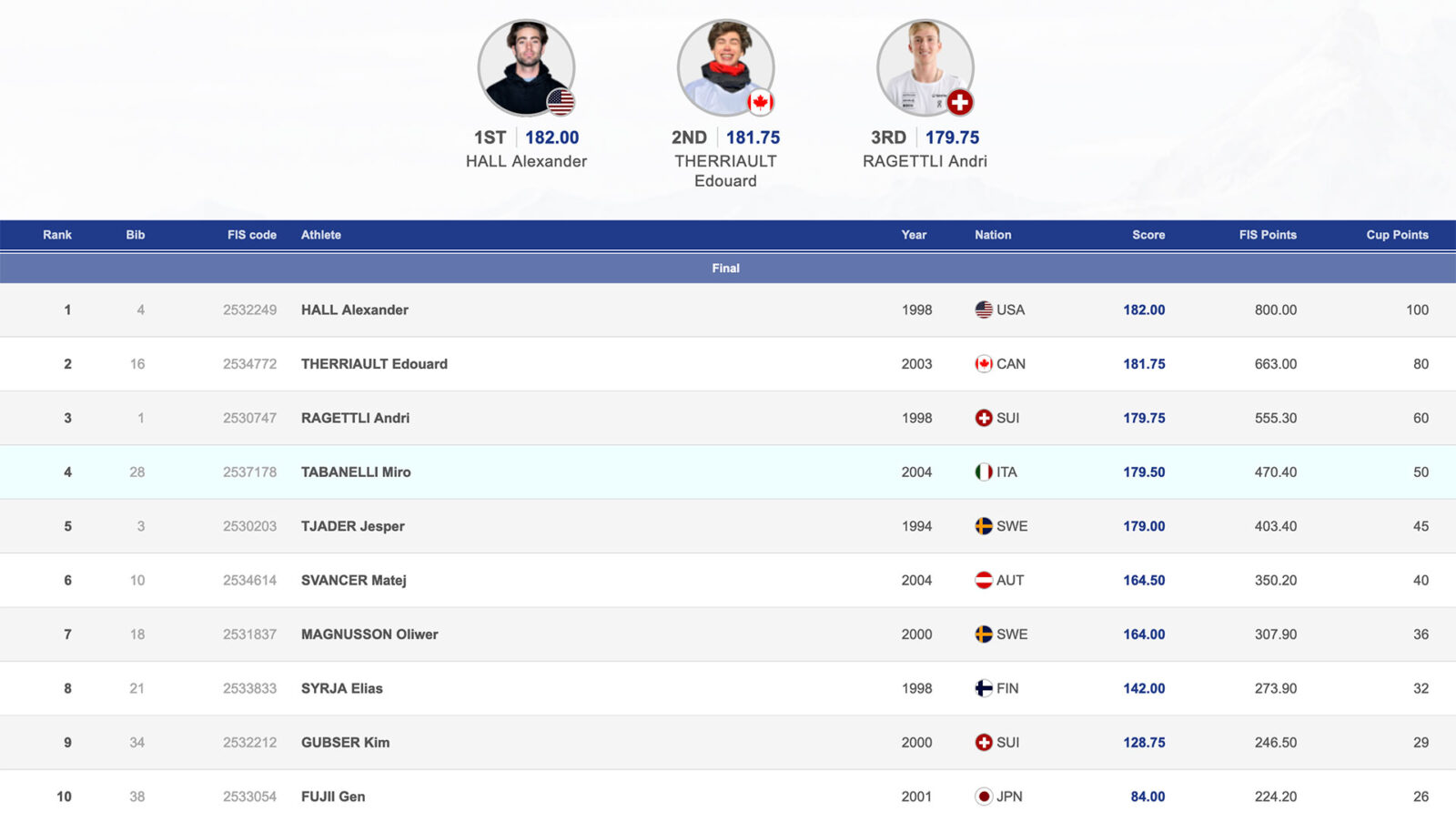
Bringbacks or big spins: The plot thickens
As I noted at the top, the contest in Beijing seemed to mark something of a turning point in big air. Judging panels are now scoring unorthodox tricks like Svancer’s Tokyo drift and bringbacks at the top of the range. It’s surely a welcome change that will break up the endless litany of 1800 variations we’ve seen at earlier contests. Even so, there’s still no clear consensus on what’s actually more difficult, or what actually deserves a higher score.
What’s the higher-scoring trick: a triple cork 1980 safety or a tokyo drift pretzel 180 japan? In Beijing, it was the latter. How about a switch double bio 1800 mute versus a switch double 1080 bringback to 720? In Beijing, it was the former. In a diverse field where athletes naturally have different strengths, there’s probably no objective answer to this question. And if not even the athletes can tell you which trick is objectively harder, how are the judges supposed to know?
If there's one clear takeaway, it's that execution remains a deciding factor. Tricks like A-Hall's double 900 bringback only get high scores when they are performed absolutely flawlessly. Take for example Elias Syrja, who brought two of the most progressive tricks to today's contest—a switch tail butter cork 360 and a forward double flat 720 bringback to 540—but ended in eighth place due to slightly scrubbed landings. If you're going to bring something back, you'd best be sure to bring it back all the way. Otherwise, spinning big still remains a tried-and-true approach.
The World Cup Big Air circuit continues in Copper Mountain, Colorado on December 14-16.

Highlights Big Air Beijing 2023 (YouTube)
Big Air Beijing 2023 Final Results
Women's Finals
1. Mathilde Gremaud
2. Kirsty Muir
3. Flora Tabanelli
4. Giulia Tanno
5. Anni Karava
6. Sandra Eie
7. Mengting Liu
8. Tess Ledeux
Men's Finals
1. Alex Hall
2. Edouard Therriault
3. Andri Ragettli
4. Miro Tabanelli
5. Jesper Tjäder
6. Matej Svancer
7. Oliwer Magnusson
8. Elias Syrjä
9. Kim Gubser
10. Gen Fujii
For complete results including qualifications, visit fis-ski.com.